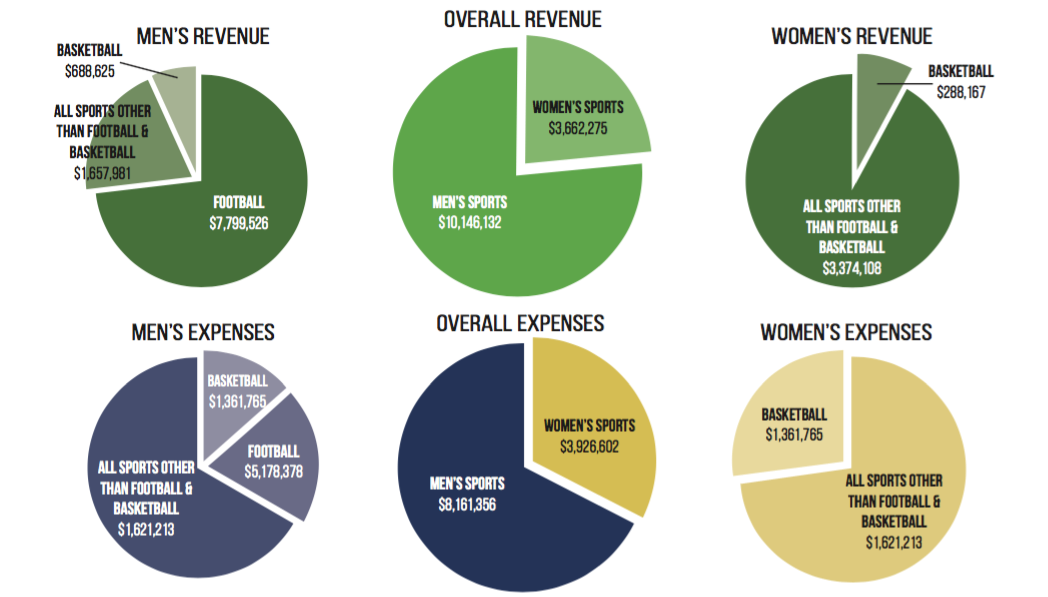Financially Overlooked: Gender and Money in College Sports
April 7, 2017
With NCAA March Madness ending recently, it seems that we will be without college basketball for quite some time now.
Where did your mind go after reading that statement? Most likely, it went to the University of North Carolina’s championship win over Gonzaga in men’s college basketball on Monday.
Without specifying which gender in relation to March Madness, the majority of readers more than likely overlooked South Carolina’s 67-55 win over Mississippi State in the women’s college championship game on Sunday.
In sports, this phenomenon of overlooking women’s sports occurs all too often. This is especially the case when it comes to funding for women’s college sports. Georgia Southern is no different when it comes to financial disparity between men’s and women’s sports.
Equity Athletics Disclosure Act
In 1994 the Equity Athletics Disclosure Act was passed which made it mandatory for universities receiving federal funds to make all gender-equality information about their respective athletic programs available to the public.
When examining Georgia Southern’s information the results can be described as alarming but not surprising. The two main data points that stuck out were the total expenses by all the men’s teams versus the expenses by women’s teams and the amount of money spent in relation to total players – in other words, money spent per athlete.
For total expenses of men’s teams at Georgia Southern, the figure is $8,161,356 total spent. There are 232 male athletes at Georgia Southern, so it comes out to $35,178 per male athlete.
When looking at women’s teams at Georgia Southern, the total number spent comes out to $3,926,602. The number of women’s athletes comes out to just 194. This means that $20,240 is spent per female student athlete.
These expenses cover a variety of things related to the respective teams which include but aren’t limited to equipment, travel, recruiting, game day expenses and salaries for coaches.
Basketball is the most costly sport when it comes to a per athlete basis at $24,668. Most people might think Football would have the highest per athlete spending but that only comes out to $7,044 per athlete.
Experiences by student-athletes
Examples of the financial restrictions are definitely felt by some female athletes on campus. One such athlete was recent fall graduate, Jennifer Wittick, who was a member of the women’s soccer team.
“We always had a dollar limit to what we could order [for meals] and a few girls thought they could order lemonade or something other than water if it still fit within their order dollar limit,” Wittick said. “But they got in trouble for doing so because it was [an] unnecessary cost.”
While the financial differences are definitely apparent, Wittick has noticed no preferential treatment or any sort of abandonment from the school when it comes to the men’s and women’s soccer team. Wittick went on to say that while they do make sacrifices they have never had to fundraise or miss out on tournaments due to lack of funding.
“I know that many schools have issues with this, but I’m happy to say I never felt like they had perks that we didn’t,” Wittick said.
While women’s sports continue to be financially overlooked, many people will say it is because they produce a sub-par product in comparison to men.This is debatable if not completely false, but perhaps investing in women’s sports would in turn make the audience invested as well.
Graphic designed by Rebecca Hooper.









